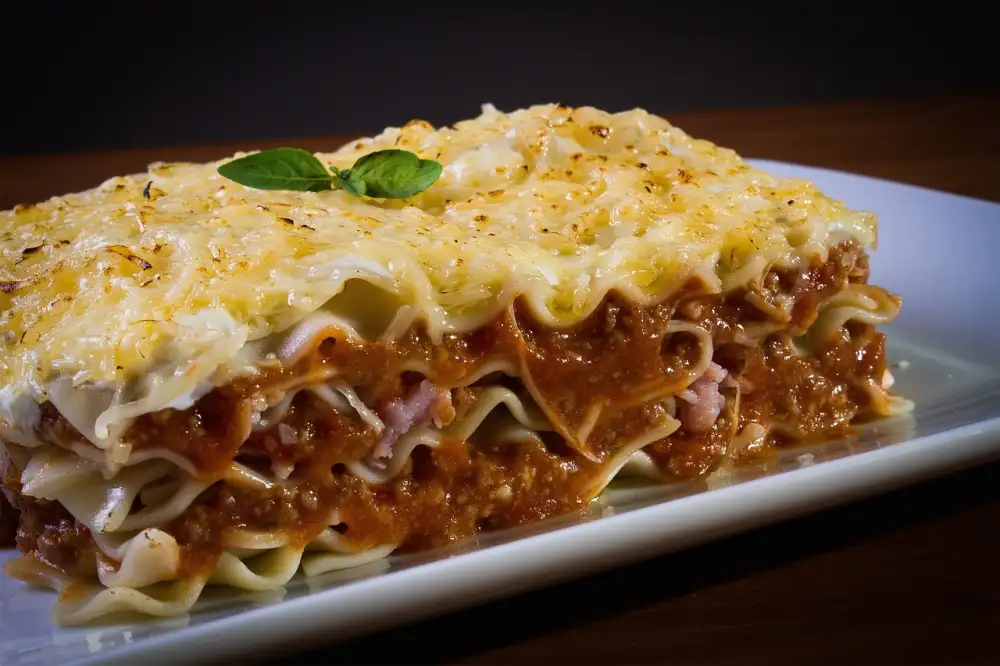Cheese Sauce 101: Master the Art of Making a Creamy, Irresistible Delight

Cheese sauce is a versatile and indulgent addition to any dish. Its creamy texture and rich flavor can elevate even the simplest of meals into a culinary masterpiece. Whether you're drizzling it over vegetables, smothering it on nachos, or using it as a dip for breadsticks, mastering the art of making a perfect cheese sauce is essential for any food enthusiast. In this article, we will guide you through the step-by-step process of creating a creamy and irresistible delight that will leave your taste buds craving for more. So grab your apron and let's dive into the world of cheese sauce!
Gather Ingredients for Cheese Sauce
To create a delectable cheese sauce, it is essential to gather the right ingredients. Here's what you'll need:
1. Cheese: Choose a cheese that melts well and has a rich flavor. Cheddar, Gruyere, or Monterey Jack are excellent options.
2. Butter: Use unsalted butter for better control over the saltiness of your sauce.
3. Flour: All-purpose flour acts as a thickening agent and helps create a smooth texture.
4. Milk: Opt for whole milk to achieve a creamy consistency in your sauce.
5. Seasonings: Salt and pepper are essential for enhancing the flavors of the cheese sauce. You can also add spices like paprika or garlic powder for an extra kick.
Make sure to have these ingredients ready before you start making your cheese sauce, as it will make the process much smoother and more enjoyable!
Melt Butter for Cheese Sauce
To begin the journey of creating a luscious cheese sauce, start by melting butter in a saucepan over medium heat. The amount of butter will depend on the desired richness of your sauce, but a general rule of thumb is to use equal parts butter and flour. As the butter melts, it will transform into a golden liquid, releasing its rich aroma. Be careful not to let it burn or turn brown.
The melted butter serves as the base for our cheese sauce, providing a velvety texture and enhancing the flavors of the other ingredients. It acts as a vehicle to bind everything together and create that irresistible creaminess we all crave.
Once the butter has completely melted, move on to the next step: adding flour to create a roux. This magical combination will thicken our sauce and give it body, making it perfect for drizzling over pasta, vegetables, or any dish that could use an extra touch of decadence. So let's proceed with confidence and embark on this mouthwatering adventure!
Add Flour to Create Roux
To create a smooth and creamy cheese sauce, the next step after melting the butter is to add flour to create a roux. The roux acts as a thickening agent for the sauce and helps it achieve the perfect consistency.
Start by sprinkling all-purpose flour over the melted butter in the saucepan. Use a whisk or wooden spoon to quickly stir the mixture together until it forms a paste-like consistency. Make sure to cook the roux for about 1-2 minutes on medium heat, stirring constantly.
Cooking the roux allows the flour to cook out any raw taste and ensures that your cheese sauce won't have a gritty texture. It also helps bind the fats from the butter with the liquid from the milk, resulting in a smooth and velvety texture.
Remember, it's important to cook your roux thoroughly but be careful not to let it brown too much as this can give your cheese sauce a burnt flavor. Keep an eye on it and adjust the heat if necessary.
Once you have achieved a light golden color and cooked out any raw flour taste, you're ready to move on to the next step of gradually whisking in milk. This will help transform your roux into a luscious cheese sauce that will make your taste buds sing with delight.
Gradually Whisk in Milk
Once you have created a smooth roux, it's time to gradually whisk in the milk. This step is crucial for achieving the perfect consistency and creaminess in your cheese sauce. Start by pouring a small amount of milk into the saucepan with the roux, and whisk vigorously to incorporate it. Continue adding the milk slowly, whisking constantly to avoid any lumps from forming. As you whisk in the milk, you will notice the sauce thickening up gradually. Keep whisking until all the milk has been added and the sauce is smooth and velvety. This process may take a few minutes, but be patient as it will result in a rich and luxurious cheese sauce that is worth every effort.
Incorporate Cheese into the Sauce
Incorporating cheese into the sauce is the crucial step that transforms it into a creamy, flavorful delight. Once the milk has been added and heated, gradually sprinkle in your choice of grated cheese. Cheddar, Gruyere, or Parmesan are popular options, but feel free to experiment with different varieties to create your own unique blend of flavors. Stir continuously as the cheese melts, ensuring it is fully incorporated into the sauce. The heat from the sauce will help melt the cheese smoothly, resulting in a luscious and velvety texture. Be patient during this process and avoid rushing it, as allowing the cheese to fully melt will ensure a smooth consistency. Remember to taste as you go along and adjust the amount of cheese according to your preference for richness and flavor intensity. Once all the cheese has melted and blended seamlessly with the sauce, you're ready to move on to seasoning it.
Season the Cheese Sauce
Seasoning is the key to elevating the flavor of your cheese sauce. Once you have achieved a smooth and creamy consistency, it's time to add some extra depth and complexity. Start by adding a pinch of salt and pepper to enhance the overall taste. You can also experiment with other seasonings such as garlic powder, onion powder, or paprika for a hint of smokiness. Remember to taste as you go and adjust the seasonings according to your preference. Don't be afraid to get creative and try different herbs and spices that complement the flavors of your dish. Seasoning your cheese sauce will take it from good to absolutely irresistible!
Serve and Enjoy the Cheese Sauce
Once your cheese sauce has reached the desired consistency and all the flavors have melded together, it's time to serve and enjoy this creamy, irresistible delight.
Pour the cheese sauce over your favorite dish, whether it's macaroni for a classic mac and cheese, steamed vegetables for a comforting side, or even as a dip for crispy fries. The possibilities are endless!
Garnish with some freshly chopped herbs like parsley or chives to add a pop of color and freshness. You can also sprinkle some grated cheese on top for an extra cheesy kick.
Remember to serve the cheese sauce hot to fully savor its velvety texture and rich flavors. The warmth will enhance the experience, making every bite a true indulgence.
So grab your spoon or fork and dig into this luscious cheese sauce. Let it envelop your taste buds with its smoothness and depth of flavor. It's sure to be a crowd-pleaser at any gathering or simply when you're craving some cheesy goodness.
Sit back, relax, and relish in the satisfaction that comes from mastering the art of making this delectable cheese sauce. Enjoy every mouthful as you savor the perfect balance of creaminess, tanginess, and cheesiness that will leave you wanting more.
Bon appétit!
Tips and Variations for Cheese Sauce
1. Experiment with different types of cheese: While cheddar is a popular choice, don't be afraid to try other varieties such as Gruyere, Swiss, or even blue cheese for a unique twist.
2. Adjust the consistency: If your sauce is too thick, simply add more milk to thin it out. Conversely, if it's too thin, you can thicken it by adding a little more cheese or letting it simmer for a few extra minutes.
3. Enhance the flavor: Get creative by adding additional ingredients to your cheese sauce. Diced jalapenos or crushed red pepper flakes can add a spicy kick, while minced garlic or onion powder can offer a savory depth of flavor.
4. Customize with herbs and spices: Experiment with different herbs and spices to complement your dish. Freshly ground black pepper, paprika, or dried herbs like thyme or rosemary can elevate the taste profile of your cheese sauce.
5. Use different liquids: Instead of using regular milk, consider substituting it with heavy cream for an extra indulgent and rich sauce. Alternatively, you can use vegetable or chicken broth for added depth of flavor.
6. Make it gluten-free: If you have dietary restrictions, replace the all-purpose flour with cornstarch or gluten-free flour to make the sauce suitable for those who are gluten intolerant.
7. Add vegetables: For a healthier twist, incorporate finely chopped vegetables like spinach, broccoli, or roasted red peppers into your cheese sauce. This not only adds nutritional value but also enhances the overall texture and taste.
Remember that practice makes perfect when it comes to mastering the art of making cheese sauce. Don't be afraid to experiment and make adjustments according to your personal preferences. With these tips and variations in mind, you'll be able to create a creamy and irresistible delight that will leave everyone craving for more!
In conclusion, mastering the art of making a creamy and irresistible cheese sauce is a game-changer in the culinary world. With just a few simple steps, you can elevate any dish to new heights with the addition of this velvety delight. Whether you're drizzling it over pasta, dipping your favorite snacks, or using it as a base for other recipes, cheese sauce adds that extra touch of indulgence and flavor. So go ahead, experiment with different cheeses and seasonings to create your own signature cheese sauce. Once you've mastered this versatile sauce, there's no limit to the delicious creations you can make. Get ready to impress your taste buds and those around you with your newfound cheese sauce expertise!
Published: 25. 11. 2023
Category: Food



